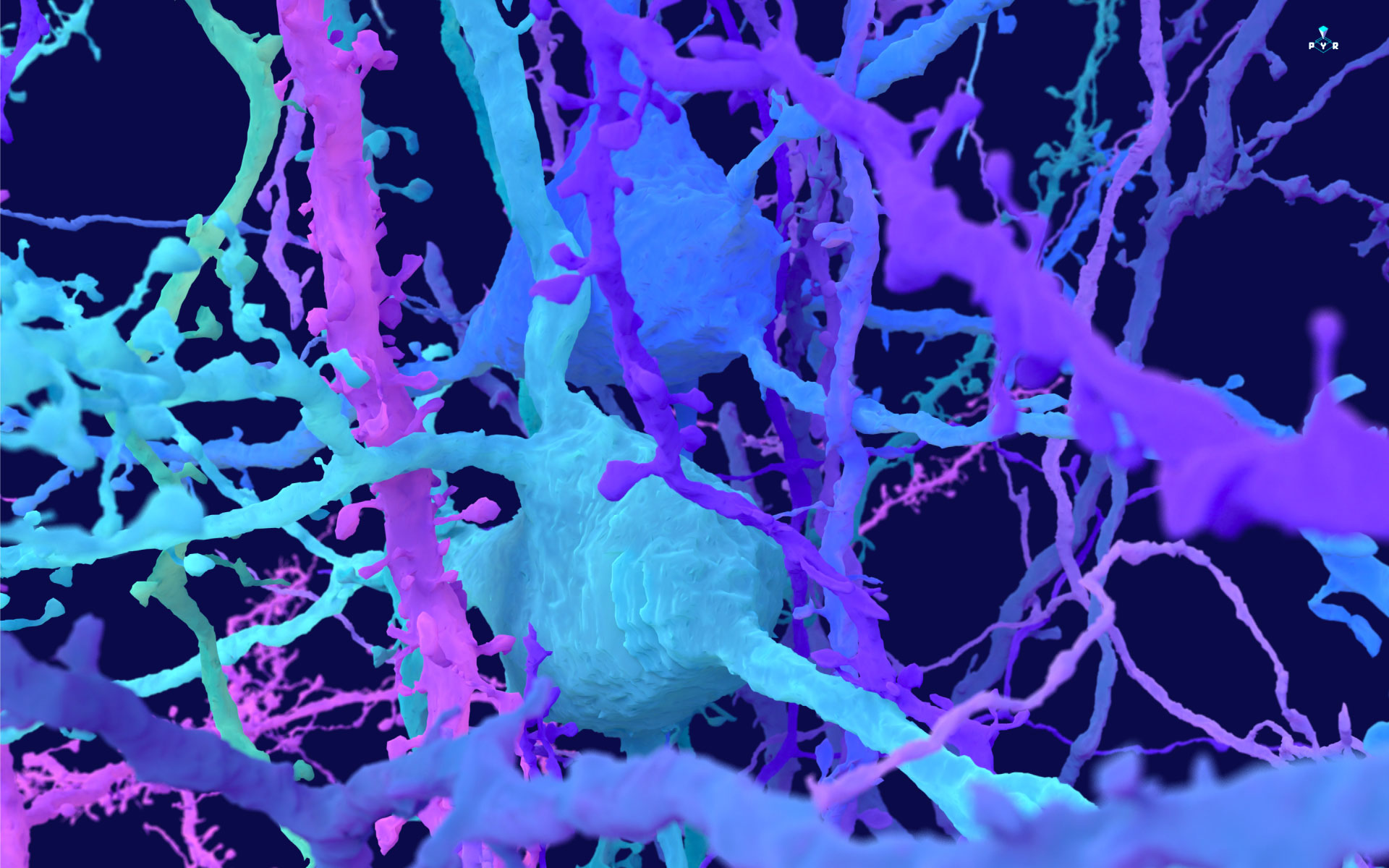If you remember how you got to this page, you can thank your hippocampus. This specialized structure deep in the brain is a control hub for a multitude of critical cognitive tasks such as spatial navigation, pattern recognition, and memory formation. It receives input from many parts of the brain and sends output just as widely. And while you sleep, the new memories made from the day’s experiences are either strengthened or washed away so you can begin tomorrow anew.
But how does this tiny seahorse-shaped structure actually work? We don’t know! That’s why researchers at Princeton University are creating Pyr, a citizen science game that will map parts of the mind’s memory control center at synaptic resolution, which will shine light on how the hippocampus works.
Pyr (pronounced “peer”) is so named for pyramidal neurons, the primary excitatory neurons of the brain. Our aim as a connectomics lab is to chart the synaptic connections of pyramidal and other cells in the hippocampus.
Synapses are so small that to reconstruct them we must use an electron microscope. Layer by layer, we image a volume of brain matter. Next comes AI that partially reconstructs neurons in 3D. This AI is much more powerful than the one that was used in Pyr’s predecessor, Eyewire. But it still makes a lot of mistakes. It can miss entire branches of the axon, the part of a neuron that sends signals out to other cells. It can create mergers, where multiple cells are fused together in 3D. These mistakes make it impossible to analyze the connectivity of these neurons, so they must be corrected.
The biggest challenge is that such corrections can take many hours of expert human proofreading to fix just one neuron. And there are about 100,000 neurons in just this dataset. Thus we call on you to help!

Pyr is the third chapter of citizen science from Princeton’s Seung Lab. In 2012, we launched Eyewire, a game that mapped part of a mouse retina and regions of a zebrafish brain. Check out related publications here.
Next, in 2019, we embarked on a new chapter of connectomics with FlyWire, a collaboration between hundreds of scientists and a small team of elite citizen scientists that was supercharged with a new AI. This project mapped a whole fly brain in only five years! For a sense of just how much more powerful the AI is in FlyWire than in Eyewire, it took only 6 months for the citizen scientists in FlyWire to proofread the same number of neurons that took 10 years in Eyewire.
FlyWire uses a new technological pipeline based on a browser-based reconstruction platform called Neuroglancer. If you like looking at neurons, you’ll find it amazing. Check out some views from visual cortex. Neuroglancer allows users to navigate anywhere in a dataset to quickly proofread and visualize unlimited neurons in a browser. It is, however, scientific software and not the easiest to use so here is a user guide.
From this FlyWire tech, we’re now cooking up Pyr. We expect the project to open to alpha testers in fall of 2024. If you haven’t already, get on the wait list at pyr.ai, and learn more about connectomics at science.eyewire.org.


